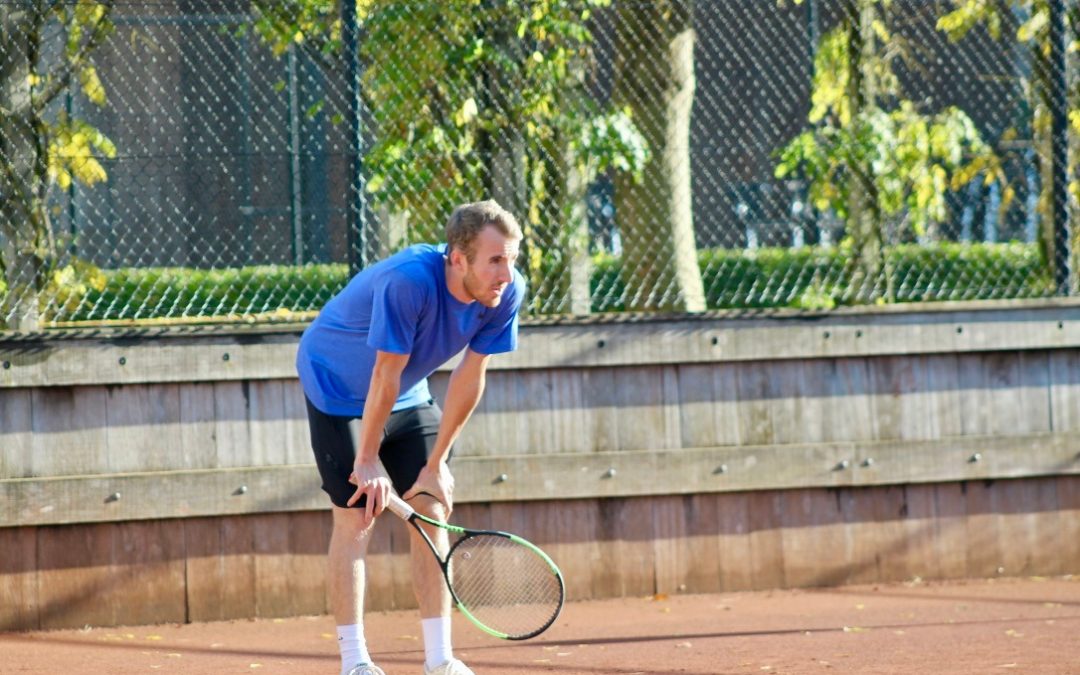Through surveying competitive tennis players worldwide, 63% of them said they dealt with at least 1 or more injuries that lasted longer than a month. Injuries are a big challenge that many players face these days. It can be tough when you can’t do what you love as you see your tennis friends or teammates compete, have fun, and improve, while you’re watching on the sideline or at home.
Throughout my college tennis career, I had wrist and hip flexor injuries so I know how it feels. Both these injuries took me away from tennis for about 6 months. It wasn’t fun as I was not able to practice and compete. Looking back, I’ve learned a lot about my body and how injuries can occur. With all the knowledge that I’ve gathered over the years, my intention is to share a new perspective that hopefully helps you to prevent injuries.
Back when I was in college, I realized that my forehand wasn’t effective which caused me to be physically tight. In matches, I was mentally tight as well due to the pressure I was putting on myself. Through repeating this tight movement over and over again, I was harming my body. Later, I saw that studies confirm that stress increases the risk of athletic injury!
Quote from one Study:
“There is no “injury-prone” personality type. However, there has been a consistently demonstrated relationship between one psychological factor – stress – and athletic injury risk. Athletes who experience high levels of stress, whether on or off the field, are at greater risk of being injured. Stress causes attentional changes (e.g., narrowing of attention, general distraction, increased self-consciousness) that interfere with an athlete’s performance. Stress has been shown to cause increased muscle tension and coordination difficulties which increase the athlete’s risk of injury. Teaching athletes stress management techniques has been shown to reduce injury rates over a season of participation.” (www.sportsmed.org)
Let’s clarify what stress means. In the dictionary, it says: “pressure or tension exerted on a material object”. What are some specific examples of how tennis players experience stress on the court?
- Trying to prove yourself to teammates, coaches, & parents.
- Being afraid to make mistakes, look bad, or fail.
- Getting frustrating with results or unmet expectations.
- Overthinking or worrying about the past or future.
If you’re experiencing any of these examples, you’re (unconsciously) increasing your chances of injury. I don’t say this to scare you of course, but to help you be more aware.
Cause of Stress
It’s important to realize that your tennis results or other people never create stress, even if it seems like that. How do I know this to be true? Two similar tennis players with the same ranking can lose in the 1st round of a tournament (a similar experience), but feel completely different about it based on how they look at it. It’s always your own perception so you always create your own stress.
Most of the things we stress about are learned mindsets. When you played tennis for the first time, there was a good chance that you were not that worried. The exciting news is that you can learn to unlearn the stress too. Neuroscience shows that our brains are neuroplastic, which means you can rewire and change your mind. I discuss this in-depth in my program. For now, I have a practical tip for you to reduce stress at the end of this blog.
Consequences
Before I finish, I’d like to share one last thing about the consequences of stress because it doesn’t stop when tennis players get injured. Not only do players suffer from the physical pain of an injury, but it can also have mental consequences. Some players get bored, lose motivation, and develop poor habits. This can negatively impact their mindset or mental health. Finally, when injuries are healed and players can compete again, another challenge that arises sometimes is the fear that the injury will reoccur…
Usually, I like to talk about more positive things but I hope this article helped you realize the negative consequences of stress on the body and what it can lead to. Most competitive tennis players do prehab and workouts to stay fit and healthy which play a huge role. However, it’s crucial for competitive and elite tennis players to develop new mental thought patterns to not only feel and play better in matches, but to reduce injury risk too.
Practical Tip
Take some time every day to sit down and meditate (preferably at the same time). It sounds cliche, but many studies show the benefits of this practice. The key is consistency. You can improve the quality of your meditation by doing a breathing exercise first. Simply breath in for 4 seconds and out for 4 seconds. Do this for 2-3min as you observe your breath. Then, start meditating and simply feel your body, heartbeat, or breath, as your eyes are closed. Sometimes people think that you have to quiet your mind but that’s like hitting 4 aces in a row… Lower the expectations and relax;) Whenever your mind drifts off, simply bring your attention back to your main point of focus. Hope this helps:)
> If you have a (tennis)friend who struggles or could benefit from this information, please share this with them. The more people are aware of this information, the better.
> If you liked this, then join the Facebook Group HERE where I share new insights on what it takes to master your mindset, accelerate your progress, and be part of an amazing competitive tennis community!

